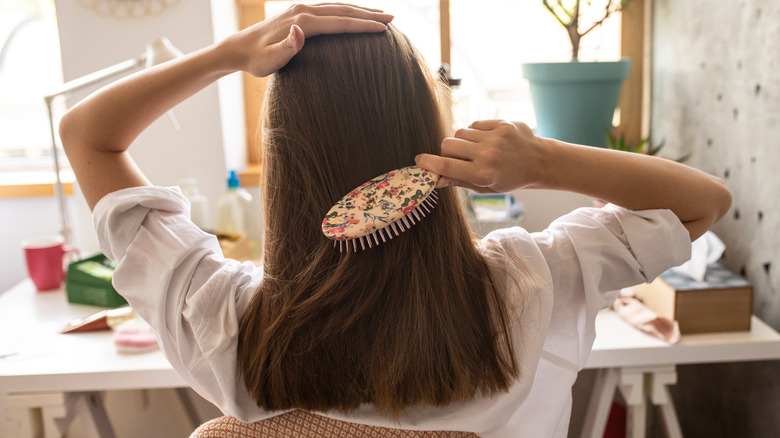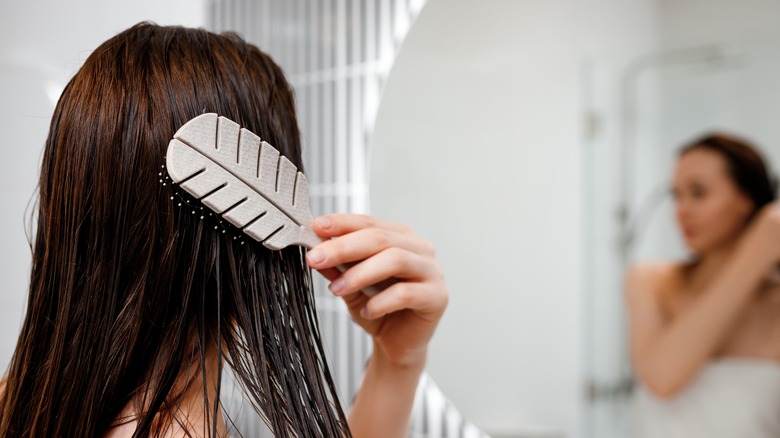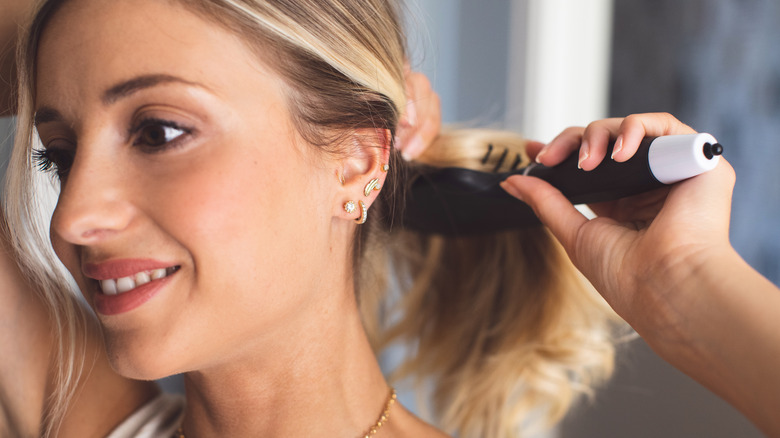What's The Difference Between Wet Brushes & Regular Hairbrushes?
Feel like your vanity is overflowing with hair tools? After stocking your beauty station with curlers, clips, straighteners, and scrunchies, having multiple hairbrushes may seem like one more unnecessary waste of space. Cue confusion and frustration when you see all manner of different brushes at the beauty supply store. Good luck trying to find your holy-grail brush — not only are there options for varied hair types but there are also separate brushes for wet and dry hair. But how different could these brushes really be?
It turns out that wet brushes and standard brushes play very distinct roles. The most basic and crucial difference between regular hairbrushes and specialized wet brushes is their design. Hairbrushes can come in many different sizes and configurations to suit different hair types, but regular hairbrushes typically use densely packed bristles made from firmer materials — like nylon brushes or popular and beneficial boar bristle brushes. Wet brushes, meanwhile, have bendier plastic bristles spaced further apart. Naturally, this design disparity isn't just a matter of aesthetics, so let's dive into how the physical differences between regular hairbrushes and wet brushes are tied to their intended purposes.
Wet brushes are gentle detangling tools
Wet brushes are built for a specific, very important purpose: unknotting tangles in damp hair. But why does this require a whole different type of brush? Well, brushing wet hair is a surprisingly dicey proposition. In fact, rough brushing is one of the most damaging mistakes you can make with wet hair. This is because wet hair is extremely fragile — a lot more fragile than when it's fully dry.
It all comes down to the makeup of our hair. Individual strands contain protein centers protected by overlapping scales called cuticles. When wet, these proteins' bonds are more fragile, leaving all of your hair vulnerable to breakage and other damage — say, from combing too roughly. To make matters worse, brushing wet hair can harmfully reshape its cuticles so that they no longer lay flat and smooth along the hair shaft, resulting in a dull, rough texture.
This is where wet brushes come in. Compared to their regular counterparts, wet brushes are designed with flexible bristles and more space between them. This creates a gentler brushing experience that puts less pressure on the weakened strands of your damp hair — and, ultimately, reduces damage from wet brushing. So, if you can't stand to leave your hair messy and tangled until it's fully dry, investing in a wet brush could be the key to a less stressful hair routine. Of course, this begs the question: Do you still need a regular brush, too?
Regular hairbrushes smooth your strands and stimulate your scalp
Whereas wet brushes are dedicated detanglers, regular hairbrushes tackle both knots and other issues. For one thing, the pressure of firm hairbrush bristles is like a mini-massage for your scalp, promoting blood flow and, in turn, hair growth.
Regular hairbrushes also add shine by smoothing out strands and helping disperse natural oils from root to tip. "Sebaceous glands located in your hair follicles produce natural oils that help lubricate your scalp," celebrity hairstylist Vincent De Marco told Healthline. These oils are like built-in conditioners that keep your tresses hydrated and resilient, but without them, the lengths of your hair can appear dry and lifeless. Fortunately, running a hairbrush through your locks helps prevent an oily-roots-with-dry-ends situation. "When you brush your hair properly, it helps distribute these natural, healthy oils, from the roots of your hairs to the ends, giving them a natural shine," explained De Marco.
For most people, embracing both a wet brush and a regular brush can be a powerful one-two punch for better hair health, but depending on your hair type, you may be able to get by with only one of these brushes. Consider not only your usual routine but also your hair's unique needs. Is it oily and prone to gnarly tangles? A wet brush could be the answer for you. On the other hand, is it parched and slow to grow? A regular hairbrush could help distribute protective oils and keep your scalp happy.


